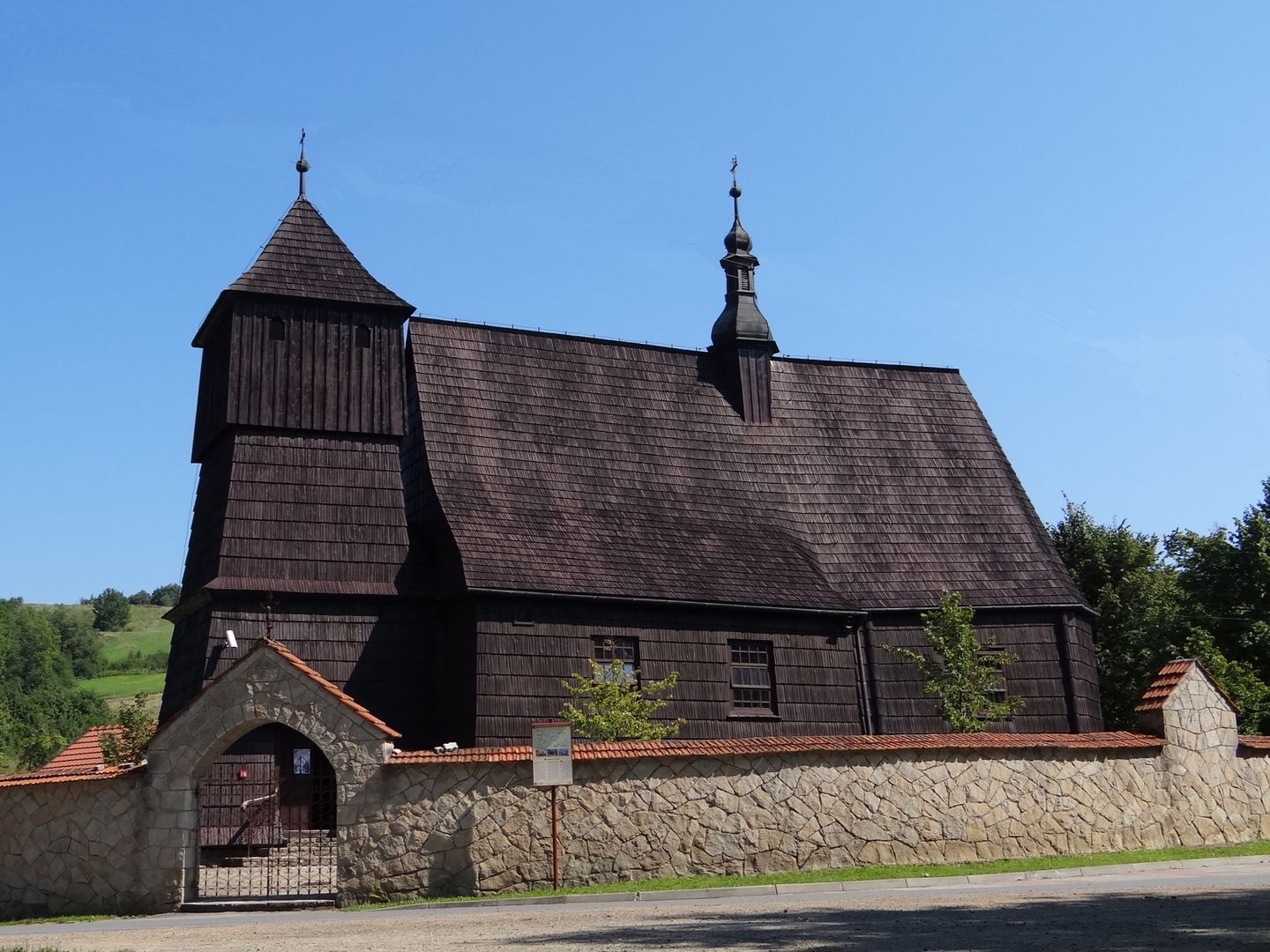St. Stanislaus the Bishop and Martyr and St. Barbara the Martyr Church in Szyk
7.07

Overview
The church in Szyk, located in the Limanowa district, is an excellent example of late Gothic wooden architecture. Built using the log construction method, it features a single-nave layout and a polygonal chancel with a small sacristy. The temple's roof is a single-ridge, saddleback structure, supported by a Gothic-style orchid truss, and topped with a Baroque bell tower. An interesting feature is the leaning tower, loosely connected to the main body, covered with a tented roof and featuring two entrances with ogee-arched lintels. The church was founded in the first half of the 14th century by the Lasocki family, and the current structure dates back to 1633, incorporating fragments of an earlier 16th-century temple. It was consecrated in 1634 and has since undergone numerous renovations, including in the 18th and 19th centuries. The Church of St. Stanislaus the Bishop and St. Barbara is part of the Lesser Poland Wooden Architecture Trail. The interior of the temple is adorned with flat ceilings, and the polychromes were created in the second half of the 19th century. Preserved fragments of Renaissance paintings from the 16th century depict scenes of the Assumption and the life of St. Stanislaus. The main altar, in the late Baroque style and crafted in the 18th century, features an image of the Virgin Mary with Child, attributed to Stanisław Samostrzelnik or an anonymous Master from Szyk. The side altars, in the Rococo style with images of saints, complement the church's rich furnishings. Other valuable elements include a stone baptismal font from 1585, a Baroque painting of St. John Nepomucene from 1726, a late Baroque chalice from 1753, and a bell from 1765. The church not only serves a religious function but also stands as a valuable monument of material culture and local history, bearing witness to the region's past.
Location
2025 Wizytor | All Rights Reserved